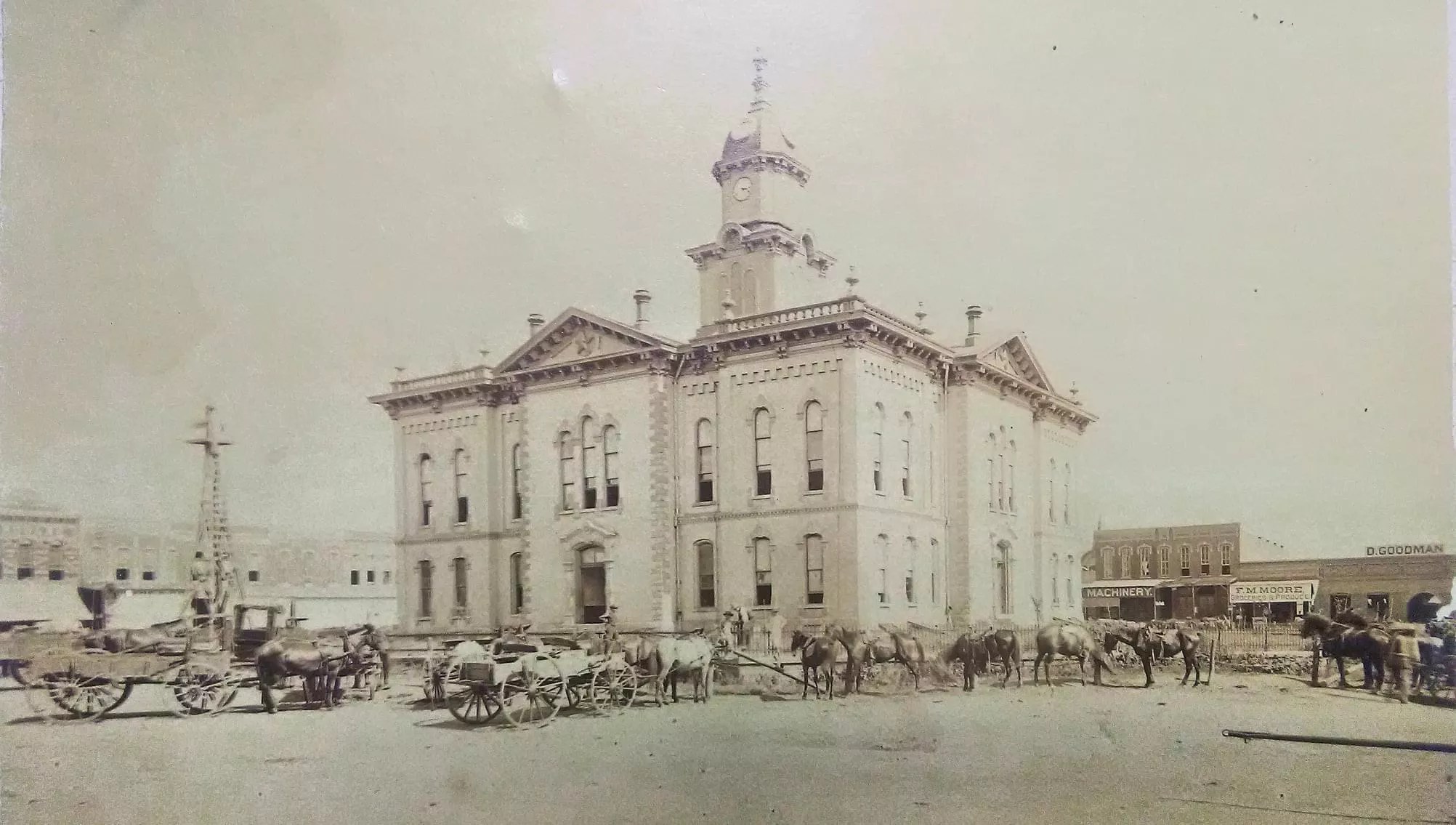
Adobe Stock

Audio By Carbonatix
On a recent, breezy Saturday morning, 95 years after the 1930 Sherman Riot, over 100 people assembled 70 miles north of Dallas in Sherman’s downtown square for a different purpose: After five years of advocacy, a permanent historical marker detailing the riot’s events was being unveiled.
On May 9, 1930, a mob of roughly five thousand people surrounded the Grayson County Courthouse and attempted to break-in and capture George Hughes, a Black farm laborer who had been accused of assaulting a white woman. Grayson County sheriffs locked Hughes in the courthouse’s two-story fire-proof document vault while the rioters set the courthouse ablaze.
Several members of the mob breached the courthouse and eventually used dynamite to blast open the vault, where Hughes is believed to have suffocated. His body was then pulled from the vault, dragged behind a car, mutilated and hung from a tree. Rioters then destroyed Sherman’s thriving Black business district. Historians have pointed out similarities between the Sherman Riot and the 1921 Tulsa Race Massacre, where dozens died while many homes and Black-owned businesses burned after a white mob sought to lynch a Black man who had been accused of raping a white woman.
On March 29 of this year, a diverse gathering of ceremony attendees celebrated and reflected in Sherman. Speakers described the events of nearly a century prior and recognized the efforts of those who advocated for the marker to be installed. Marker Chairman of the Grayson County Historical Commission Kurt Cichowski opened the ceremony, and Pastor Lander Bethel offered a prayer of reconciliation.
When news happens, Dallas Observer is there —
Your support strengthens our coverage.
We’re aiming to raise $30,000 by December 31, so we can continue covering what matters most to you. If the Dallas Observer matters to you, please take action and contribute today, so when news happens, our reporters can be there.
The path to this point was long and often sidetracked by disagreement over how, or even if, the riot should be officially remembered by the city. Efforts to place a marker on the courthouse grounds dating back to 2020 were met with considerable resistance from residents. Opponents suggested that it was unnecessary to shed light on such a dark time in the town’s history.
But at the unveiling, Grayson County Judge Bruce Dawsey stated that “community is formed out of an awareness of history and our shared past.” Grayson County Historical Commission Chairperson Dusty Williams praised the marker as a daily reminder that history is found in places other than museums.
History, Now Marked
Attendees cheered for marker applicant and Grayson County resident Melissa Cole as she approached the podium.
“We did it! We did it!” she said.
Cole thanked all involved in the marker’s installation and explained the riot’s history, emphasizing not only sobering moments but also heroic actions. She drew attention to an insurance clause that excluded riot-related damage from coverage. As a result, the businesses that were ruined were not rebuilt; the Black community’s generational wealth in Sherman vanished overnight.

An angry mob destroyed the original Grayson County Courthouse.
courtesy Melissa Thiel
One of the community members of 1930 Cole recognized was Salem Sofey, a Syrian grocer who stood against the mob. With Mulberry Street in ashes, rioters attempted to burn down Black homes next. Sofey reportedly stood in the center of the road, telling the mob that he was the landlord who owned all of the homes on the street. The mob turned away, leaving the homes intact.
The ceremony also included musical interludes provided by pianist Yolanda Boyd and vocalist Clemon W. White IV. Boyd, whose grandparents fled their home on Sherman’s east side following the riot, characterized her journey back to Sherman as a revelatory “homecoming process.” She said this endeavor has been “five years of not really feeling okay… not really knowing if I’m accepted,” testifying to the riot’s enduring emotional impact.
Moving Forward, Learning About the Past
Debi Owens, secretary of Grayson County’s branch of the NAACP, stated that she had never heard of the riot prior to news coverage of Cole’s advocacy. “I’m a lifelong resident of Grayson County,” she said, “I have lived in Sherman and Denison for 70 years. I had never heard of George Hughes until five years ago.” Learning this history, for her, has felt like “playing catch up.”
“Why is this not taught in Texas history?” she asked.
After the reception, roughly 50 ceremony attendees drove the two miles from Sherman’s downtown square to Austin College’s Ida Green Communication Center for the debut of The Ninth Day of May. Co-authored by Dr. Njoki McElroy and her daughter, Marian McElroy, the play focuses on her grandparents’ memories of the riot, blending factual events with fictional characters.
As depicted in the play, McElroy’s grandparents, Jeff and Julia Washington, sheltered in their house at 1012 Natchez St. as the mob destroyed their friends’ Mulberry Street businesses. The play’s dialogue incorporated elements of food, music and culture. McElroy’s twin sons, Harry and Larry McElroy, accompanied the live reading as part of a jazz ensemble, while McElroy’s granddaughter, Lauren McElroy Leon, created an animated depiction of a dancing Black woman in period dress, an homage to her grandmother’s love of music and dance.
Now, many in Sherman hope to move ahead while officially, respectfully, remembering the past. Yolanda Boyd, the pianist whose grandparents ran from their home to escape the riot’s attacking horde, offered a warm suggestion to other descendants of Sherman’s Black community who have perhaps stayed away over the years: “It’s time to come on back.”